“The oldest congregation in Rock Hill, S.C. constructs their fourth building.”
City Directories and History: 1946 – St. John’s Methodist Church, 1963/ Present – Same
ST. JOHN’S UNITED METHODIST CHURCH The following article is based largely on Early Methodism in Rock Hill, South Carolina 1856–1881 by William Boyce White, Jr., published in 1989. The following information was compiled and written for R&R by Paul M. Gettys in 2014.
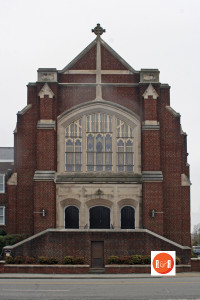
Images courtesy of photographer Bill Segars – 2011


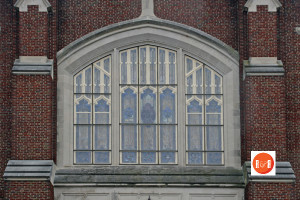

St. John’s is Rock Hill’s oldest church organization, and it has the distinction of having had four locations in downtown Rock Hill in its history. The organization of a Methodist church in the new village of Rock Hill is largely attributable to the efforts of two women, Mrs. Martha Johnson Robinson, wife of the tailor R. Calvin Robinson and Mrs. Susan Jane Bobo Springs, wife of planter Richard Austin Springs of Springsteen Plantation east of Rock Hill. In the Presbyterian stronghold of eastern York County, these ladies began working to bring itinerant Methodist preachers to the new village of Rock Hill by 1854. Early services were held in the Rock Hill Academy building (also known as Pine Grove Academy), located on Mrs. Ann Hutchison White’s farm about where Pendleton Street is now. A church was organized in the Academy building in 1856 with six charter members: Mr. and Mrs. Robinson, Mrs. Springs, Mrs. Viney Workman (a slave), and Mr. and Mrs. Silas Shelby Elam. Rev. John W. North was sent by the circuit to become pastor.
The small group was determined to build a church building. Rock Hill had been created in 1852 with the survey of 23 lots and a Main Street on land owned by Alexander Templeton Black. These lots quickly sold, and to accommodate growth such as the new church site, Mr. Black secured a second survey from John Roddey, and a parallel street was created, named Church Street. The trustees of the Methodist circuit purchased a lot of 0.7 acres for a price of $40 at the corner of Church Street and an alley in March 1857. Today, this site is the corner of Black Street and Hampton Street. Here, they soon built a two-story frame structure with a porch and the main entrance on the alley (Hampton Street). Local resident S. T. Frew later said this building looked more like a barn than a church. Most of the funds for this building came from Mr. and Mrs. Springs. Although Mr. Springs was a Presbyterian, he supported his wife’s efforts to begin a Methodist Church in Rock Hill. The building was lighted by kerosene lamps. The men and women sat on opposite sides of the church.
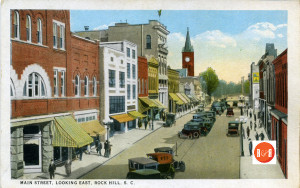
Early image of Rock Hill’s Main Street. Courtesy of the Turner Postcard Collection – 2012
The first pastor, Rev. North, served from 1856 to 1857. The next pastor was Rev. Landy Wood, who was the first to actually live in Rock Hill. Mrs. Springs purchased a house on Main Street and allowed the minister to live there. The membership of the

An early image of St. Johns Methodist Church as it stood on the corner of Main and Caldwell Streets, until the new present church was constructed. Note the historic building next to it was originally the U.S. Post Office ans was moved to the current site on South Oakland Avenue. Courtesy of AFLLC
congregation grew rapidly as the village grew. At the beginning, the church met once a month. As the church grew, services were held more often. In the early days, there was no organ or piano. The song leader would raise a tune using a tuning fork. One of the principal song leaders was Miles Johnson.
During the Civil War, there were sporadic meetings with visiting ministers. In 1866, Rev. James M. Cline was sent to Rock Hill to lead the church. A joint Sabbath School was created in 1866 serving the Methodists and Presbyterians. When a small Baptist church was begun, the Baptists were allowed to use the Methodist building on alternate Sundays. At some point, a free-standing bell tower was built between the church building and Black Street. The 50-foot high tower served as the town’s fire alarm.
During the ministry of Rev. Minton A. Connolly in 1870-71, the church bought a house on Main Street for use as a manse. The house provided by Mrs. Springs had proved too small, and the church purchased a house which had been built for Capt. Robert M. Kerr shortly before the Civil War. The manse was located on Lot #7 of the original plat of Rock Hill and was located directly across from the Gordon Hotel.

Catawba Indian Chief Samuel Blue was highly influential and often publically spoke of the tribes history at St. John’s Methodist Church. Pictured here with visitors to the reservation in the 1940s. Courtesy of the Jack Tucker photo collection of York County, S.C.
As the city and the church grew following the Civil War, it became necessary for the congregation to have a larger house of worship. The manse was moved from Main Street to the church lot at the corner of Black and Hampton, and a fine new brick church was built on the Main Street lot. The church was built from a plan book provided by the minister, Rev. Thomas W. Munnerlyn. The newer Saint John’s Methodist, (it’s 2nd in Rock Hill), a brick church had a wooden tower on the front with a clock and bell. The clock rang the hours, and soon became a fixture on Main Street. This was one of the most prominent buildings on Rock Hill’s Main Street. The new church was dedicated in June 1876. Rock Hill’s Baptists continued to meet in the Methodist building when it moved to Main Street and the Baptist church was organized there in 1878. They later built a brick church on Hampton Street next to the old Methodist Church. The original Methodist Church building on Hampton Street was sold and razed in 1880, and the property was in several ownerships until being purchased by John J. Waters in 1887. Mr. Waters built an impressive Victorian house on the lot. The manse remained at the corner of Hampton and Black Streets until 1897, after which it was owned by several families. It was demolished in 1937 and an Esso service station was built on the corner. Both lots are now part of the Rock Hill City Hall site.
As the church grew, a number of auxiliary organizations were formed. One was the Women’s Foreign Missionary Society, which was interdenominational and included the Presbyterian, Episcopal, and Associate Reformed Presbyterian ladies.
In 1897, the Methodist Church was damaged by a fire at a nearby residence. The church was awarded an insurance settlement. Since the building had become inadequate to house the growing congregation, the leaders decided to invest in a new building rather than repair the old one. The new building was built just to the east on Main Street at the corner of Caldwell Street and Main, St. John’s Methodist, (it’s’ 3nd in Rock Hill). This was on the original Lot #8 of the Main Street lots. The acquisition of the property involved a complicated series of transactions. This impressive Gothic building was completed in 1897.
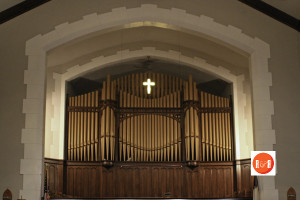
Images courtesy of photographer Bill Segars – 2015


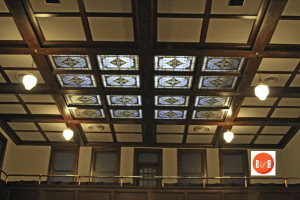
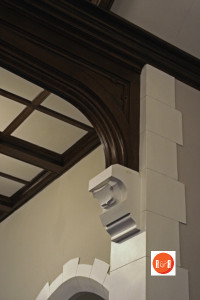
This building served St John’s for almost 25 years, when growth again required a relocation. In 1924-5, the church built a new sanctuary on Oakland Avenue and White Street. This property had originally been part of the White family farm and had at one time been the location of the Witherspoon home. The church complex now includes a gym and large educational buildings.
The SC Architects: 1885 – 1935, Wells and Dalton, 1992, reported “the 1923 church was designed by Joseph H. Casey.”
The Herald reported, Jan. 10, 1925 – featured a special section on the new St. John’s Methodist Church, which would officially open Jan. 18, 1925.
Note in this diagram, St. John’s Court is no longer in evidence. The home once lining the street have been relocated or demolished, that is with the exception of one home. Sanborn Insurance Map 1926 – 1959. Courtesy of the Galloway Map Collection
The Herald reported, March 27, 1934 – “The Herald is glad to state to its readers, that an up to date pipe organ is being installed in St. John’s Methodist Church here. The material has all arrived and two experts are in the city to assemble the various parts. The organ will be placed directly back of the pulpit.”
Click on the More Information > link found below the picture column for additional data or pictures. Also see significant numbers of entries for the church on both Hampton Street as well as East Main.
Click HOME to return to the numbered site tour of Rock Hill’s downtown.
Stay Connected
Explore history, houses, and stories across S.C. Your membership provides you with updates on regional topics, information on historic research, preservation, and monthly feature articles. But remember R&R wants to hear from you and assist in preserving your own family genealogy and memorabilia.
Visit the Southern Queries – Forum to receive assistance in answering questions, discuss genealogy, and enjoy exploring preservation topics with other members. Also listed are several history and genealogical researchers for hire.
User comments welcome — post at the bottom of this page.
Please enjoy this structure and all those listed in Roots and Recall. But remember each is private property. So view them from a distance or from a public area such as the sidewalk or public road.
Do you have information to share and preserve? Family, school, church, or other older photos and stories are welcome. Send them digitally through the “Share Your Story” link, so they too might be posted on Roots and Recall.
User comments always welcome - please post at the bottom of this page.










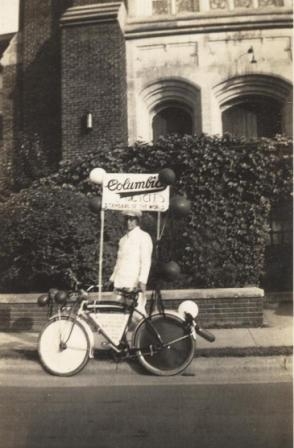



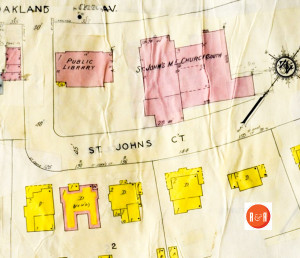




Share Your Comments & Feedback: